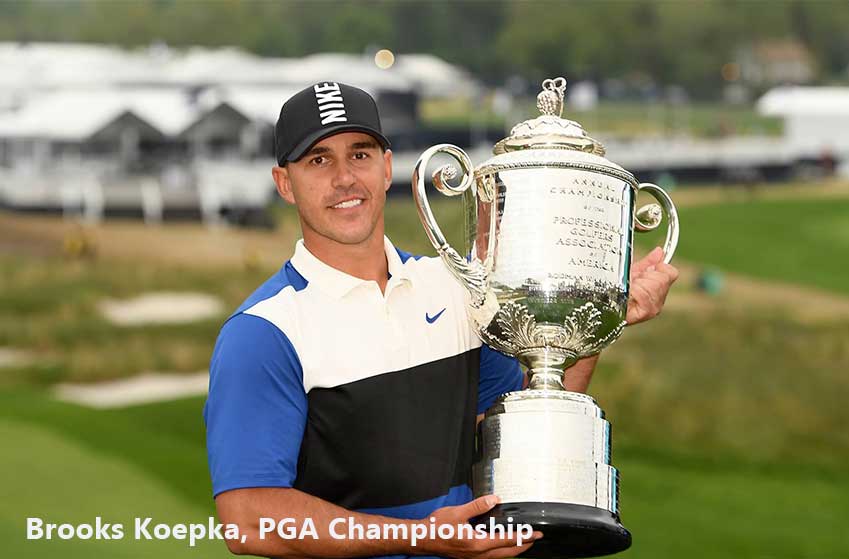Reflections on the US Open
Brooks Koepka is now the proud member of a very exclusive club – one of only three players to have won back to back US Opens since the war. He joins Ben Hogan and Curtis Strange in defending his Open title, but he didn’t make all of the running. While he was cool and composed with his long putting when he needed to be, it was actually the exciting young English player Tommy Fleetwood who looked for a long time like he was well on the way to sealing the victory, with a spectacular record-equalling round of 63 on the final day.
A winning attitude from Tommy Fleetwood
That in itself was a remarkable achievement and I for one would have been delighted to have seen Tommy pick up his first major victory in such style. I thought he’d looked fantastic on his way around – his putting was solid, and with the exception of a few mistakes on the final day he performed brilliantly. Clearly Fleetwood has a great future ahead of him and I loved his attitude out on the course, as well as when he was talking afterwards about those crucial missed putts on 16 and 18.
“I hit the putts I wanted, and I’m not going to say I should have done this or that. Shooting 62 was actually more in my mind than where we were in the tournament coming down the last few holes. So it feels strange to be a little disappointed to have shot 63. But it’s been a great day and to equal the record is very special.”
That for me is the attitude of a real winner – enjoying the moment and his remarkable achievement while reflecting on his mistakes but not dwelling on them.
The Mickelson incident
Which brings me neatly on to the big story of the 118th US Open. When it comes to mistakes, there are few more disastrous (or, to be honest, more basic) than the one Phil Mickelson made on the 13th green. Hitting a moving ball is the sort of rush of blood to the head that sometimes overwhelms younger players from time to time – but it’s certainly not the kind of thing that you’d expect to see from one of the world’s most experienced professionals.
The context behind the incident is that Mickelson was having a shocking round – he was four over par for the day as he took his putt on the 13th – and when he realised that his putt was going to miss, he ran to the other side of the hole and hit the moving ball again. Mickelson took the two-shot penalty on the chin, and later apologised for his actions, saying he was “embarrassed and disappointed” and that it was not his “finest moment”. My take on the incident is that these things happen – golf is full of such high pressure moments – but that we should always hope that these highly paid professionals will do the right thing. If this hope is misplaced (as it often seems to be with footballers) then it’s a sad reflection on the game.
More controversy for the USGA
I think there’s also an interesting sub plot going on here, that gives the whole moving ball controversy some added spice. Shinnecock Hills has been the scene of some serious issues for the USGA, with Koepka finishing a ridiculous 16 shots under last year (in a supposedly tough tournament). Even as far back as 14 years ago, Tiger Woods suggested that the USGA had “lost control of the golf course. There’s nothing wrong with a guy being under par. If they play well, they deserve to be under par, but not like this – this is not the way it’s supposed to be played.”
Mickelson set a similar tone before the event this year, commenting on the 7th that “I think it’s a great hole until the USGA gets a hold of it.” In the light of this already tense atmosphere, some fellow professionals have seen Phil Mickelson’s temper tantrum at 13th as attempt to embarrass the USGA. What kind of impact this all had in the end, either on the USGA or on the eventual outcome of the tournament is hard to say. The USGA certainly seemed a little wrong-footed by the incident, with Mickelson himself having to call them to ask if he should have been disqualified under the rules. But as for the eventual winner, it seemed that nothing much was going to affect Brooks Koepka.
Aside from the histrionics around the moving ball incident, there was a final fascinating story playing out in the final round at Shinnecock Hills – seeing Koepka playing against his good friend Dustin Johnson. Johnson was trying hard to join the 22 other players who have won multiple U.S. Open titles, but after sharing the lead coming into the final round, Johnson eventually came in third with a round of 70.
I always wonder what it must be like to play against a good friend in this kind of high pressure situation – I know that a quick game on the Deep Water Bay course in Hong Kong with friends always has an added edge, so I’m sure that it must have been in the back of Koepka’s mind as he played that final round. That he kept his cool, and didn’t let the charge of Tommy Fleetwood distract him either, is testament to what a professional this back-to-back winner of the US Open really is.

